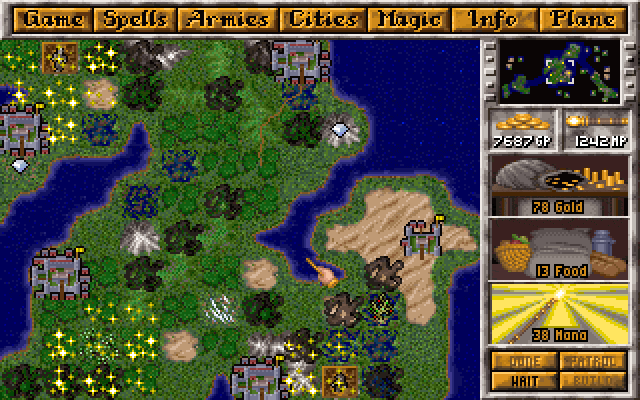I won't go too far into what Stanford bills "Design Thinking" right now. Instead I want to talk a little about video game design, and the difference between what most companies do and what one company in particular - Stardock - does. Along the way perhaps we'll get some design thinking, too.
Most game companies, like Electronic Arts, develop game ideas that they think will be marketable and will appeal to a wide audience. The Madden series is a good example of this. Americans love football, especially long passes, bone-crushing sacks, stiff-arms, and spin-moves, so EA developed a game that is, essentially, a hyped up version of football that is realistic enough to not feel gimicky, but far enough removed from being realistic that it's not frustrating to play for the majority of EA's consumer-base. That's a model that works, and EA has gotten away with progressive minor graphical upgrades and occasional feature additions on the way to huge sales year after year of what is essentially the same game.
Of course, EA is not alone in this. Almost every major game - especially on the PC, but also on consoles - these days is a sequel. Mass Effect 2, Tropico 3, Majesty 2, Fallout 3, Final Fantasy 7,326, and so on. In sports gaming, perhaps it's inevitable that all games are remakes, but in strategy, or RPG, or action it's not so much good game-design as good business.
Stardock does things a little differently. Don't get me wrong, they are still doing what they need to do to make money. Because Stardock is a hybrid company, they use their massive enterprise software profits to support a game-development branch that can afford to and does risk doing things differently. The result has been some of the most innovative games of the last few years: Sins of a Solar Empire, Demigod, and Galactic Civilizations. All three were successful and, in their own ways, completely different from what anyone had done before.
At the moment, Stardock is developing Elemental: War of Magic. Old-time gamers will recognize Master of Magic, one of the most famous strategy games of all time, and the godfather of Elemental.

What is striking about Elemental, besides the far superior, post-1995 visuals, is the process Stardock has used in its development. Design Thinking 101, you might call it.
(Here's a link to some screenshots)
Stardock opened the Beta for Elemental to any and all pre-ordering customers over a year before their scheduled release date. In essence, they made available to the public an early alpha version of the game, sans graphic engine, sans most features, sans fun. Why? Because they wanted to know what their customers wanted to have in the game. They had a lot of good ideas themselves, of course, and as experienced game designers they knew what they reasonably could and could not hope to accomplish. But the most important first step to good design thinking is to build empathy, to know not what you can, should, and desire to make, but rather what you ought to make, and for whom. Stardock, more than any other game designer, does just that.
For example, Stardock's last game, Demigod, was a multi-player focused RTS/RPG hybrid. It released buggy, struggled in reviews, and never really took off despite a fairly solid game mechanic and an innovative structure. Stardock learned, from the subsequent year's customer survery - which, I should mention, they publish freely - that most of their buyers don't really care for multi-player games. In a time when the gaming world is going MMORPG, where World of Warcraft has a larger annual income than many countries, this is a stunning revelation. It's not that people don't want multi-player, it's that there are a whole bunch of gamers who simply don't play online, but for whom almost no one is developing games anymore.
As they continually build a sense of what their future players want, Stardock also continues to introduce the prototypes of ideas they develop in their own brainstorm. The public beta has allowed for more feedback than most games could ever hope to get, both in the form of bug-catching and in terms of refining the game engine. This is also design thinking: rapid prototype, show to users, and refine based on feedback. Whereas EA doesn't show this year's Madden to a large audience until release, at which point features are locked in and only bugs remain (because it's way easier to catch bugs with 1,000,000 players than with 100 testers). Stardock, by making the game available before it is finished, is allowing the game's future players to actually help determine what's in the game.
The most exciting thing about Stardock, however, is that they're not just a bunch of crazy idealists. They have a business model, a successful plan. They are already a strong, established company, and they are just as susceptible to the need for profits as any other corporation. What's exciting, then, is that they do things the right way anyway, because, as it turns out, that's a more sustainable model for customer satisfaction, long-term profits, and, when it comes down to it, good, satisfying design. Where Electronic Arts is lagging in innovation compared to companies like Paradox Interactive and Bioware (who they essentially bought-out), Stardock is leading the way in building games for people, rather than building games for games.



No comments:
Post a Comment